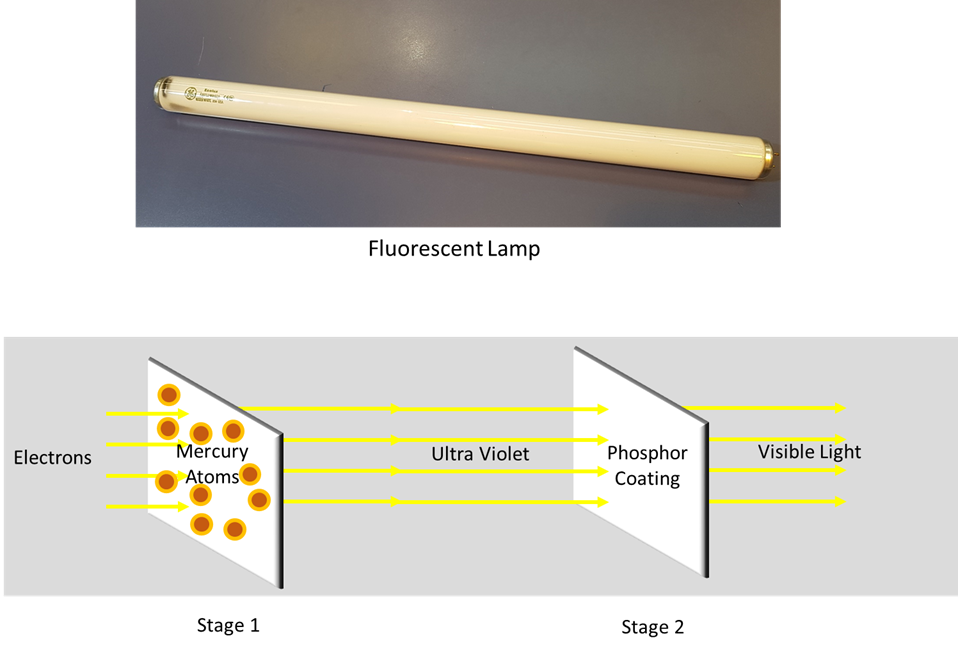20 Fluorescent Lamps: Operation
Aaron Lee
Fluorescent lamps produce visible white light by a two-stage process.
First, a charge is induced on the cathode and an electrical current passes through the arc tube. As the electric current passes through the gas inside the tube, collisions between moving electrons and ionized mercury atoms produce UV radiation.
Since UV radiation is invisible to the human eye, the second stage uses the phosphor coating on the inside of the lamp to convert the ultra-violet radiation into visible light. The UV light is absorbed by the phosphor, and the phosphor glows or fluoresces. This has the effect of lengthening the wavelength of the light as it passes through the phosphor coating of the glass, thus converting it to visible light.

Different types and mixtures of phosphor coatings used are responsible for all the different color temperatures available.
When a fluorescent lamp is first installed, it may appear to have a flickering or fluctuating light output. After approximately 100 hours of use, this flickering should give way to a smooth, steady quality of light. This 100 hour time period is called its “seasoning” period and lamps that give a smooth, non-flickering operation are said to be “seasoned”.
Lamp life is reduced by operating with the wrong ballast type, using excessive supply voltage or frequent switching. For every on / off switching cycle, a lamp can lose about three hours of its total lamp life. By switching a bank of lamps on and off under test conditions until half of the group of lamps have failed, manufacturers are able to estimate the average lifespan of a lamp. Fluorescent lamps have an average life span between 9,000 and 20,000 hours in use.

